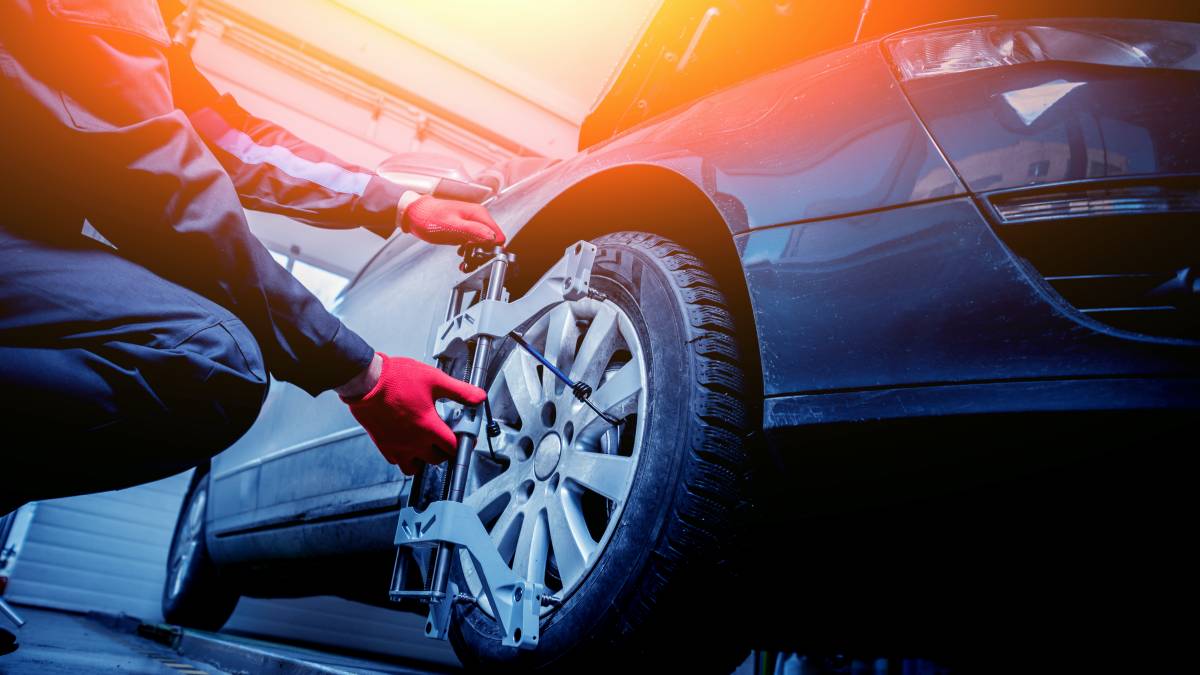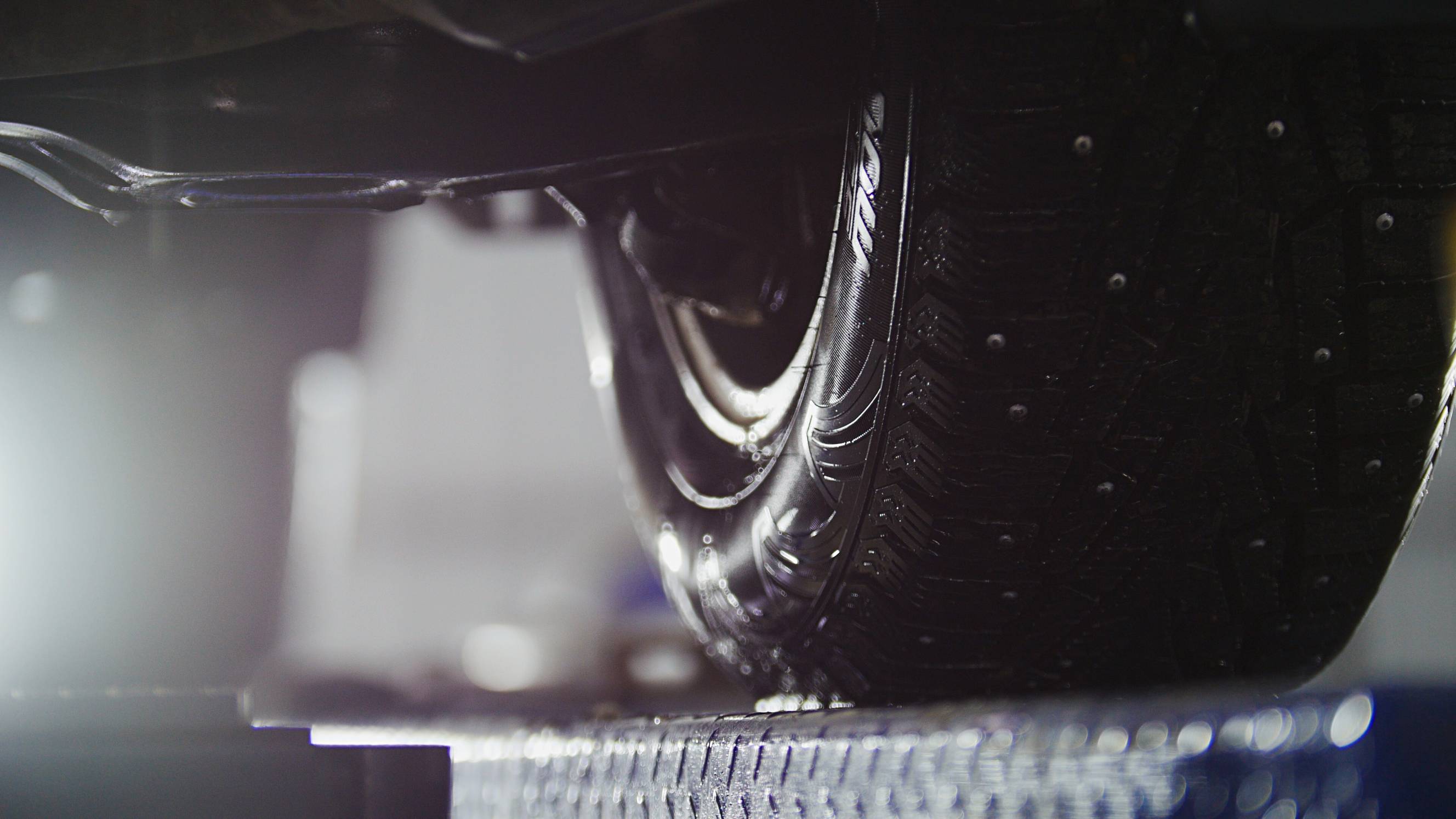
- Home/
- Comparisons/
- Wheel & Tyre Service/
- Wheel Balancing vs Alignment
Wheel balancing vs alignment: Are they exactly the same?
Comparing wheel balancing and alignment based on addressed symptoms, required tools, and more
Published on
Key Facts
- Wheel balancing corrects uneven weight distribution in wheels to prevent steering wheel vibrations, premature tyre wear, suspension and under-chassis damage, and other related issues.
- Wheel alignment adjusts the angles of your wheels to ensure they run perpendicular to the ground, parallel to each other, and maintain proper contact with the road surface, preventing your vehicle from pulling to one side.
Is your car vibrating or pulling to one side, making you consider wheel balancing vs alignment? You might need either or even both! While these services often go hand-in-hand, they actually address different issues. As such, understanding their nuances will help you keep your car safe, comfortable, and running smoothly.
What is wheel balancing?
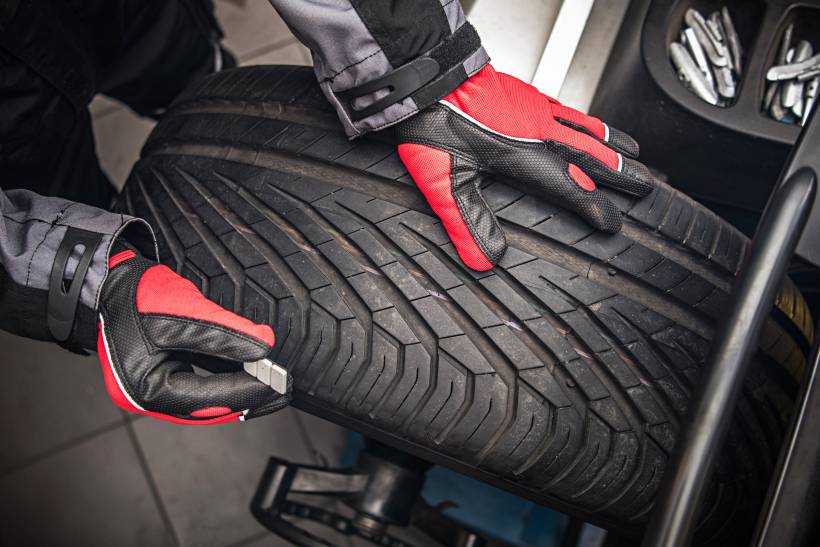
Wheel balancing ensures the weight around your wheels and tyres is distributed equally to allow them to rotate smoothly. When balancing your wheels, a mechanic adds weights to even out the distribution and counter any disparity. Unbalanced wheels could lead to vibrations in your steering wheel, uneven wear on your tyres, damage to your suspension components, and other under-chassis problems.
What is wheel alignment?
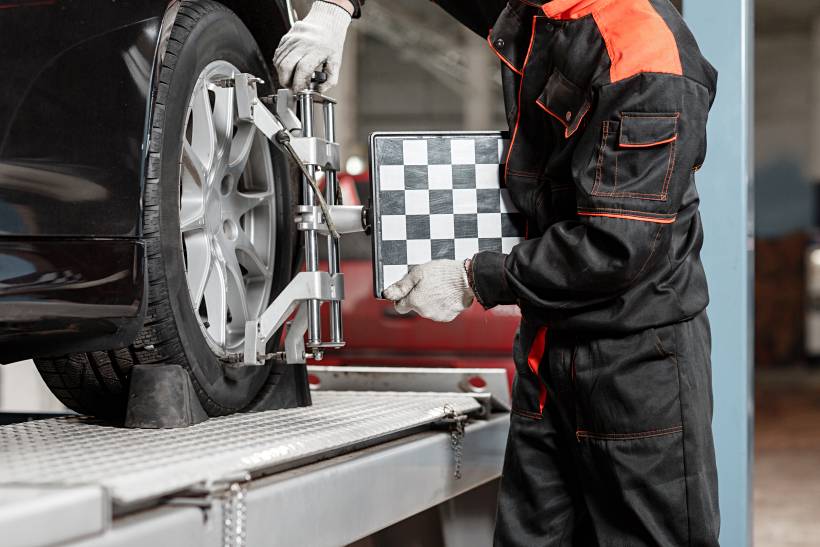
While wheel balancing focuses on the tyre and wheel assembly itself, wheel alignment deals with the bigger picture: your car’s suspension system. It’s not the wheels themselves that are adjusted but the components that hold them in place.
Proper alignment corrects angles that might be off, ensuring your tyres sit perfectly straight up and down (perpendicular to the ground) and parallel to each other. In simpler terms, alignment ensures your tyres have full contact with the road and prevents your car from pulling to one side.
Bonus: What is wheel tracking?
Aside from wheel balancing and alignment, you may have heard the term wheel tracking. What is it, and do you need it on top of wheel alignment and wheel balancing? Though this can understandably confuse consumers, wheel tracking is the same as wheel alignment. It’s just another term other mechanics use for wheel alignment services.
Wheel alignment vs balancing: How are they different?
You might not be a mechanic, and it can be tricky to determine whether you need wheel balancing or alignment. This section aims to provide more clarity by discussing their differences in detail.
In terms of addressed symptoms
Unusual vibrations in the steering wheel and seats at higher speeds, uneven tyre wear, or any issues with your vehicle’s suspension system point towards imbalanced wheels. These require a wheel and tyre balancing service.
On the other hand, misaligned wheels are the likely culprit if your car consistently pulls to one side, you find it difficult to maintain a straight steering wheel, or you experience other handling problems. In this case, getting a wheel alignment check is recommended to restore a smoother ride.
In terms of required tools
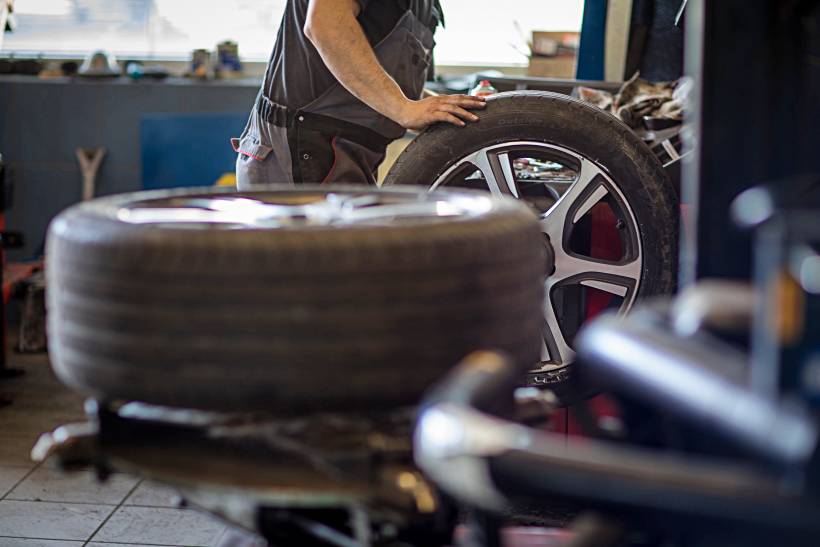
While both wheel balancing and alignment require specialised tools, the specific equipment differs. For balancing, a dedicated machine spins the wheels and detects weight imbalances. Based on this information, the mechanic adds counterweights to specific locations on the wheel to achieve perfect balance.
Wheel alignment, meanwhile, utilises an alignment rack and laser-based devices alongside standard wrenches. These lasers track the position of your wheels, ensuring they meet the manufacturer’s specifications for optimal performance, comfort, and safety. For the best results, a four-wheel alignment is recommended.
In terms of vehicle performance impact
Both wheel balancing and alignment significantly impact your car’s performance, but they do so in distinct ways.
For instance, proper wheel balancing prevents vibrations that can lead to a jittery ride and a feeling of reduced control, especially at higher speeds. This translates to a smoother, more comfortable driving experience. Moreover, balanced wheels minimise unnecessary stress on the suspension system, potentially extending its lifespan.
As for wheel alignment, it optimises your car’s handling and fuel efficiency. Misaligned wheels can cause your vehicle to pull to one side, requiring constant steering adjustments to maintain a straight line. This not only reduces driver comfort but also increases fuel consumption as the engine works harder to counteract the pulling force.
So, with proper alignment, your car tracks straighter, reducing steering effort and enabling the engine to operate more efficiently.
In terms of frequency
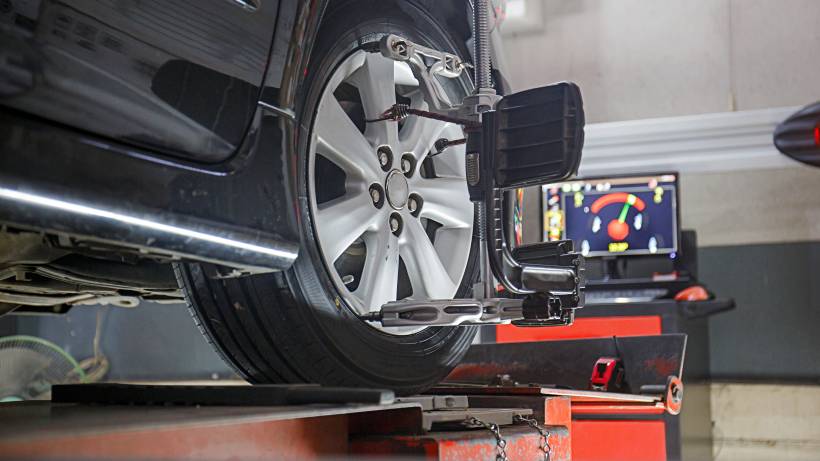
The frequency of wheel balancing and alignment depends on various factors, including road conditions and manufacturer recommendations for specific vehicles.
Generally, it’s ideal to have your wheels balanced every 5,000 to 8,000 miles or whenever you rotate your tyres. This helps counteract weight imbalances that develop over time due to wear and tear or minor bumps.
Alignment checks are recommended less frequently than balancing. A good rule of thumb is to have your alignment checked every 12,000 miles or once a year. However, this can change based on your driving habits. If you frequently hit curbs, experience significant potholes, or notice uneven tyre wear, more frequent checks might be necessary.
In terms of service cost
Wheel balancing is more affordable, averaging around £10 per wheel. Wheel alignment costs depend on whether you choose a two-wheel (front only) or four-wheel alignment. Front-wheel alignments start around £40, while a complete four-wheel alignment can reach £80 or more. Since labour costs can also differ by location and mechanic, get a quote before booking your service.
Have your car’s wheels balanced or aligned with Airtasker
Want to make sure your vehicle runs smoothly and safely? Consider booking a wheel alignment or wheel balancing service through Airtasker. The platform enables you to work with local mechanics and keep your vehicle in top condition. From refurbishment to other wheel and tyre services, confidently take your car maintenance goals to the next level. Just log in, post a task, and connect with Taskers near you!
Wheel balancing vs alignment
| Wheel Balancing | Wheel Alignment | |
|
Addressed Symptoms |
Vibrations in the steering wheel and seats Uneven tyre wear Suspension problems |
Vehicle pulls to one side Difficulty keeping steering straight Other handling issues |
|
Required Tools |
Wheel balancing machine Balancing weights |
Alignment rack Laser alignment tools |
|
Car Performance Impact |
Smoother ride Reduced vibrations Less tyre wear |
Improved handling Increased fuel efficiency Improved steering response |
|
Frequency |
Every 5,000-8,000 miles or along with tyre rotations |
Every 12,000 miles or annually |
|
Service Cost |
£10 per wheel (average) |
£40+ (front-wheel) - £80+ (four-wheel) |
FAQs on wheel balancing and alignment
While ideal alignment lasts a while, frequent encounters with potholes and rough roads can knock your wheels out of whack sooner. In that case, more frequent checks might be needed. Conversely, there’s no need for immediate action if your roads are smooth. Know that aligning your wheels can be bundled with your next routine maintenance service.
No, you don’t have to get them both done at once because they address different issues. However, since balancing is often included as part of an alignment service, it’s a smart way to maximise the benefits and get a more complete tune-up for your car.
Wheel balancing is a quick fix, often completed in 30 minutes to an hour. Alignment is a more involved process, so expect it to take an hour or more.
Regular preventive maintenance is key to keeping your wheels aligned, so don’t skip those service appointments! Keeping your tyres properly inflated also helps maintain alignment. For optimal wheel balance, follow your manufacturer’s recommendations for balancing frequency. Regular tyre rotations are important, too.
Find wheel & tyre specialists, fast
Post a task
Related price guides
